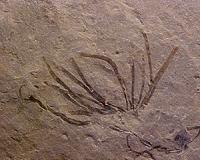 |
West Lafayette IN (SPX) Feb 02, 2011 A Purdue University scientist has found genetic evidence of how some plants adapt to live in unfavorable conditions, a finding he believes could one day be used to help food crops survive in new or changing environments. David Salt, a professor of horticulture, noticed several years ago that a variant of the research plant Arabidopsis thaliana that could tolerate higher levels of sodium had come from coastal areas. To test the observation, Salt grew more than 300 Arabidopsis thaliana plants from seeds gathered across Europe. The plants were grown in non-saline soil and their leaf-sodium content was measured. Each plant's origination was mapped, and those with the highest sodium contents were found to have come from seeds collected close to a coast or area with high saline soil. All plants were analyzed using genome-wide association mapping, which compares the genomes of a number of plants with a shared physical trait - in this case leaf sodium accumulation - to identify genes that may account for variation in this characteristic. Salt found that the plants that accumulate the highest sodium levels in their leaves had a weak form of the gene HTK1, which regulates sodium intake distribution to leaves. "The major gene that is controlling variation in leaf sodium accumulation across the whole European population of Arabidopsis thaliana is HTK1," said Salt, whose findings were published in the journal PLoS Genetics. "The Arabidopsis thaliana plants that accumulated high levels of sodium had a reduced level of HTK1 gene expression. The populations that have this altered form of HTK1 are on the coast. There are a few exceptions that prove the rule, such as populations in the Czech Republic, which isn't near the coast, but come from an area containing high saline soils derived from an ancient beach." It has long been known that plants are adapted to their local soil environments, but the molecular basis of such adaptation has remained elusive. Salt said this is some of the first evidence linking genetic changes with adaptation to specific environmental factors. "What we're looking at is evolution in action," Salt said. "It looks like natural selection is matching expression of this gene to the local soil conditions." Salt said crops grown around the world could be affected, possibly negatively, by climate change. It may become important to identify mechanisms to adapt plants to drought conditions, higher temperatures or changes in soil nutrition. Salt believes identifying genetic mechanisms of how plants naturally adapt to their environments will be key to solving those problems. "Driven by natural selection, plants have been evolving to grow under harsh conditions for millennia," Salt said. "We need to understand genetically what is allowing these plants to survive these conditions." Salt plans to continue his research to understand at the DNA level how Arabidopsis thaliana adapts to environmental conditions. The National Institutes of Health funded his work.
Share This Article With Planet Earth
Related Links Purdue University Darwin Today At TerraDaily.com
 Putting The Dead To Work For Conservation Biology
Putting The Dead To Work For Conservation BiologyIthaca NY (SPX) Jan 21, 2011 Conservation paleobiologists-scientists who use the fossil record to understand the evolutionary and ecological responses of present-day species to changes in their environment - are putting the dead to work. A new review of the research in this emerging field provides examples of how the fossil record can help assess environmental impact, predict which species will be most vulnerable to e ... read more |
|
| The content herein, unless otherwise known to be public domain, are Copyright 1995-2010 - SpaceDaily. AFP and UPI Wire Stories are copyright Agence France-Presse and United Press International. ESA Portal Reports are copyright European Space Agency. All NASA sourced material is public domain. Additional copyrights may apply in whole or part to other bona fide parties. Advertising does not imply endorsement,agreement or approval of any opinions, statements or information provided by SpaceDaily on any Web page published or hosted by SpaceDaily. Privacy Statement |